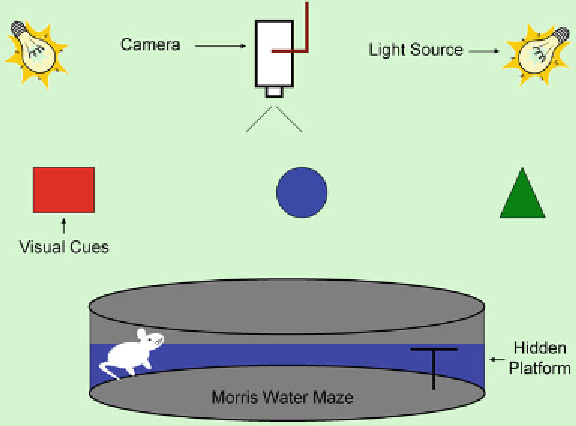Biology Reference
In-Depth Information
Fig. 2. Morris water maze setup illustrating locations of pool, camera, light source, visual
cues, and platform.
Three to six unique visual cues, such as highly refl ective geometric
images, are placed on the walls.
Black curtains are used to hide extra-maze cues, such as the experi-
menter and other animal subjects for some tests.
A video camera is mounted in the center of the ceiling above the
pool to monitor the animal's behavior through an automatic
tracking system (Poly Track System, San Diego Instruments,
San Diego, CA, Fig.
2
). Tracking is achieved due to contrast
between a white animal and black background or vice versa
with suitable refl ected lighting.
This task is performed over 6 consecutive days to examine spatial
memory.
Each animal is subjected to sixteen 60 s trials of hidden
platform with inter-trial interval of 10 s each day. The fi rst trial on
day 1 is excluded from data analysis to allow the animal to accli-
mate to the experimental conditions.
Place the platform approximately 2.0 cm below the surface of
water in the center of one of the quadrants to make it invisible for
animals. The location of the platform is changed to a novel loca-
tion every second day.
Place the animal in water facing the pool wall with the starting
point randomized among the rest of the seven locations to exclude
the shortest path to the platform.
If the animal is unsuccessful in fi nding the platform within
60 s, guide it to the platform. Allow the animals to stay on the
platform for additional 10 s after they climb on or are guided to
the platform.
4.3. Spatial Acquisition
Task (Hidden Platform
Test)

Search WWH ::

Custom Search